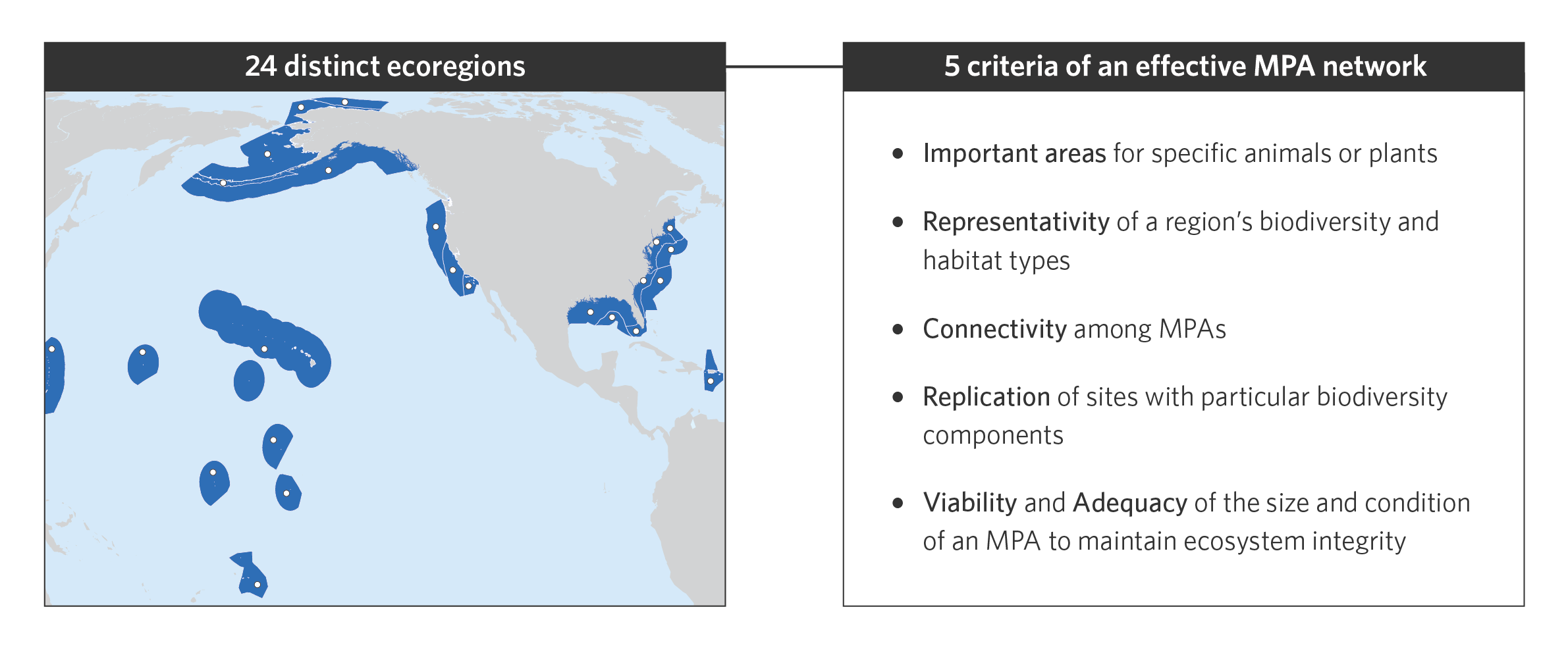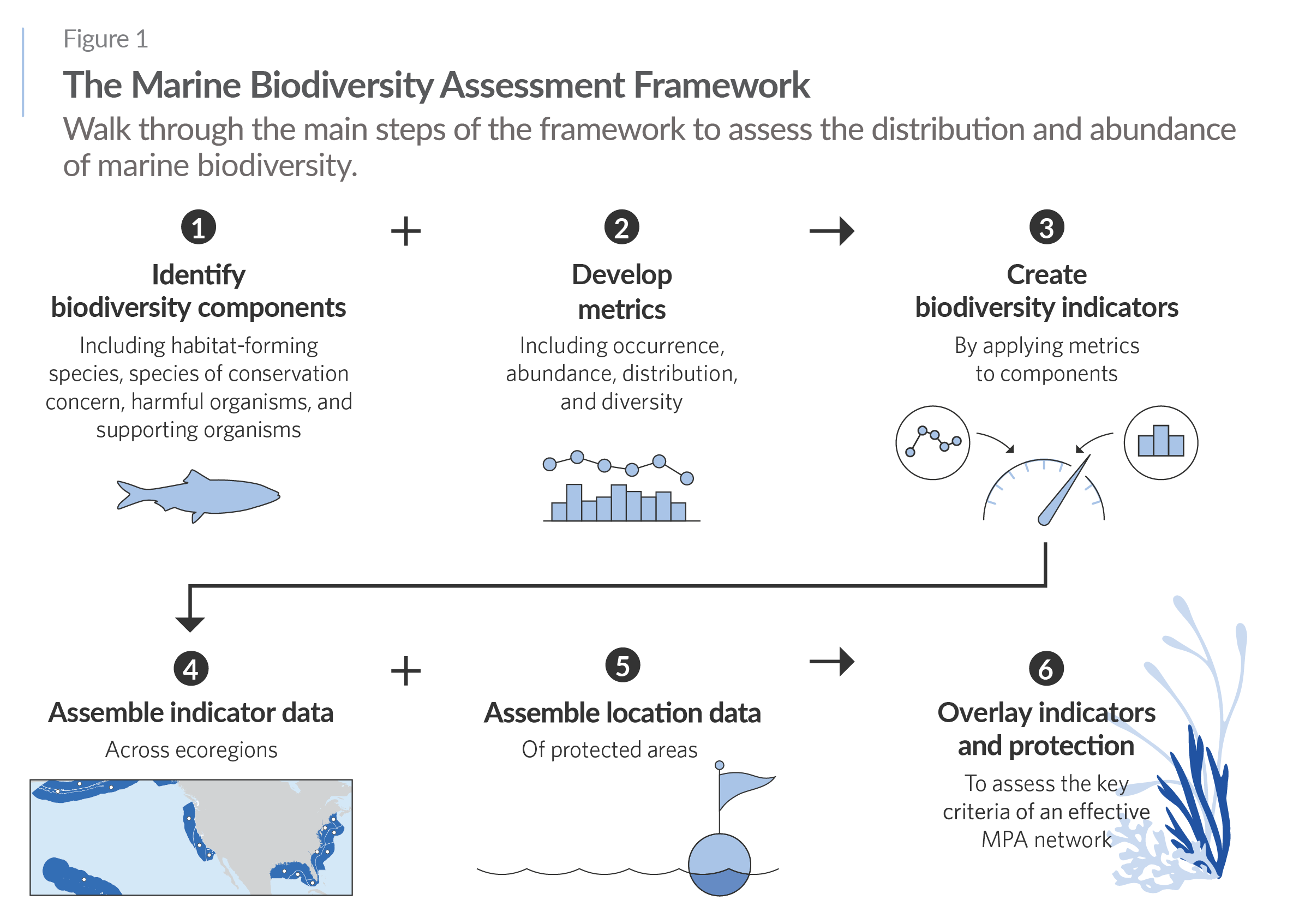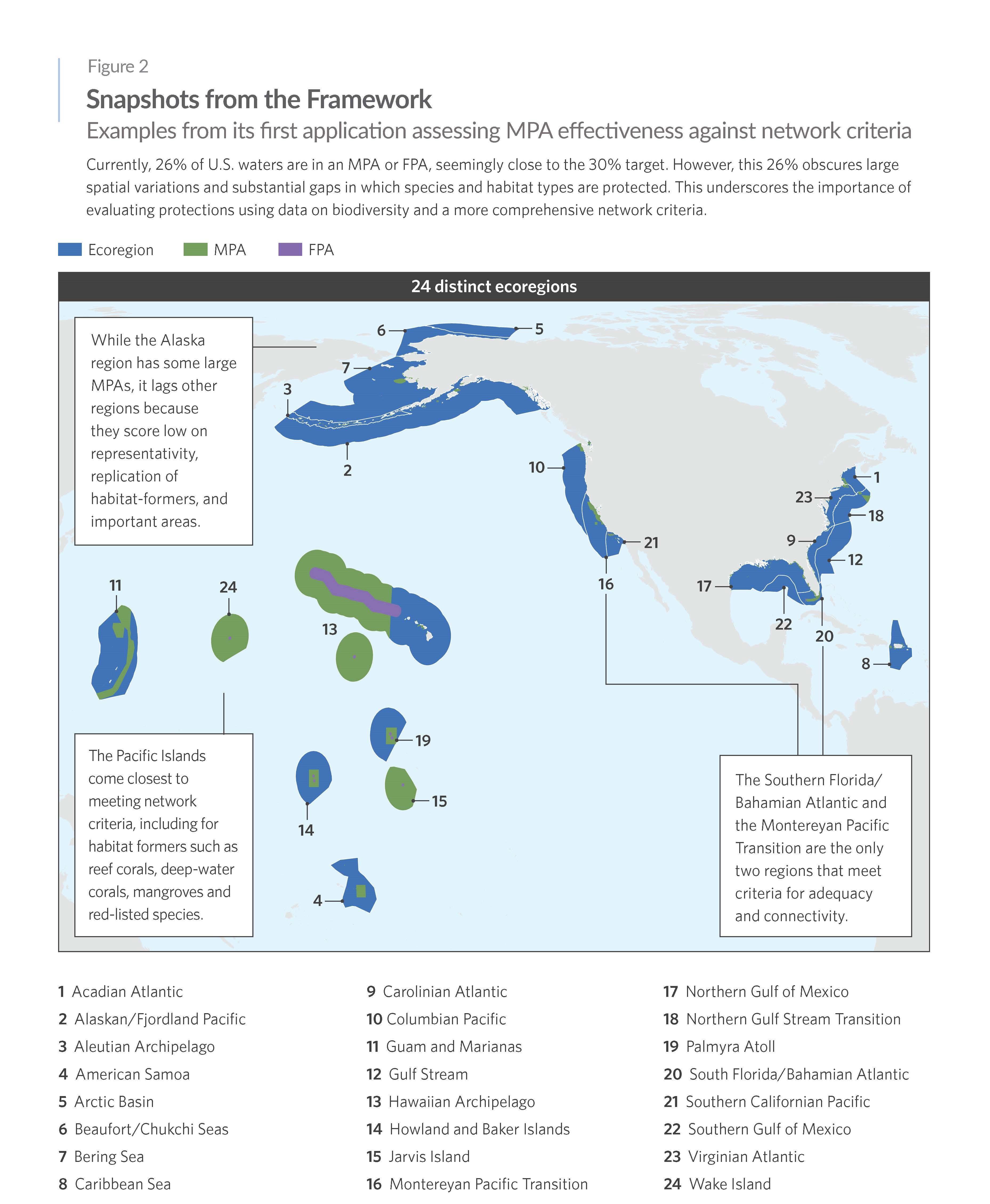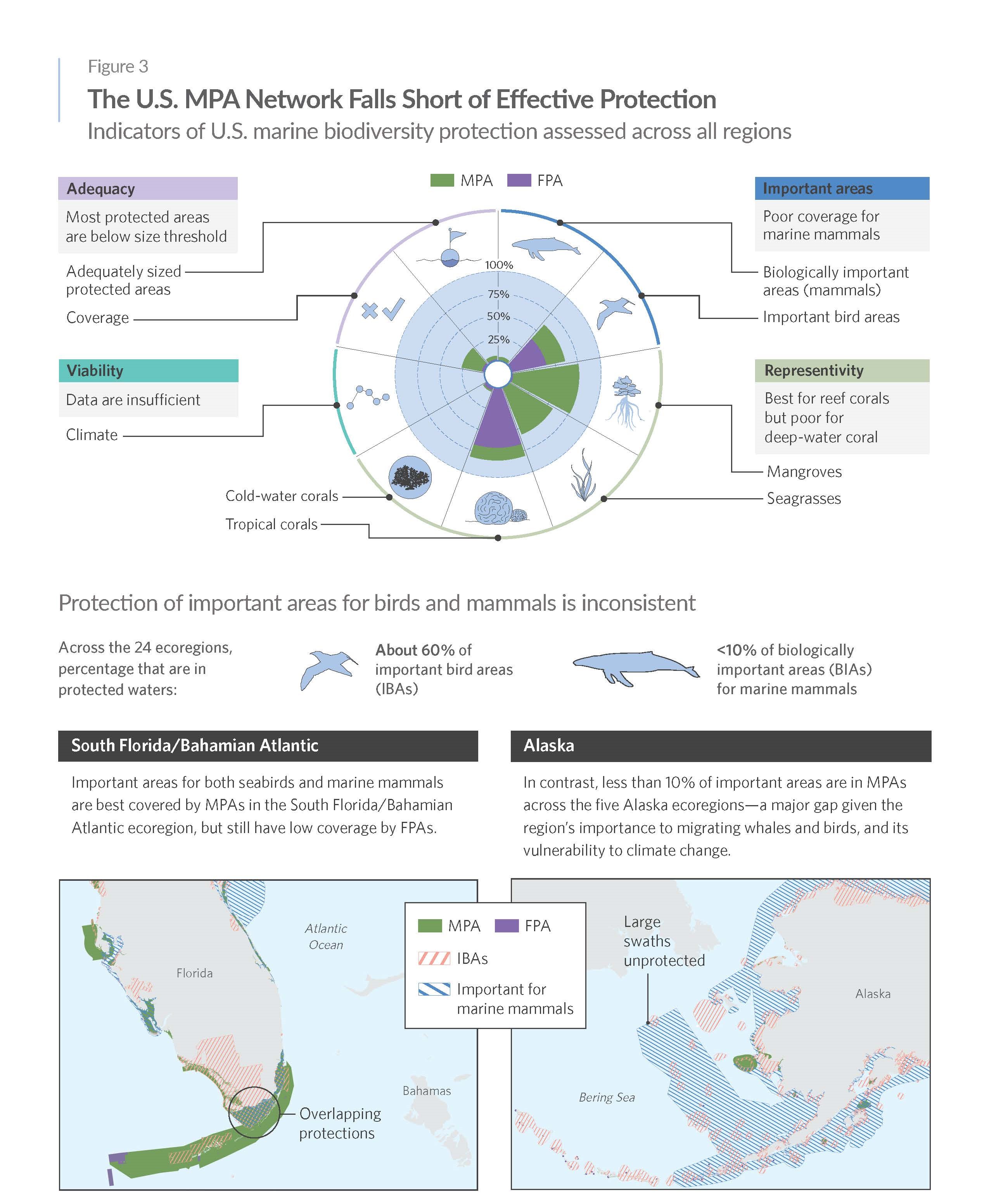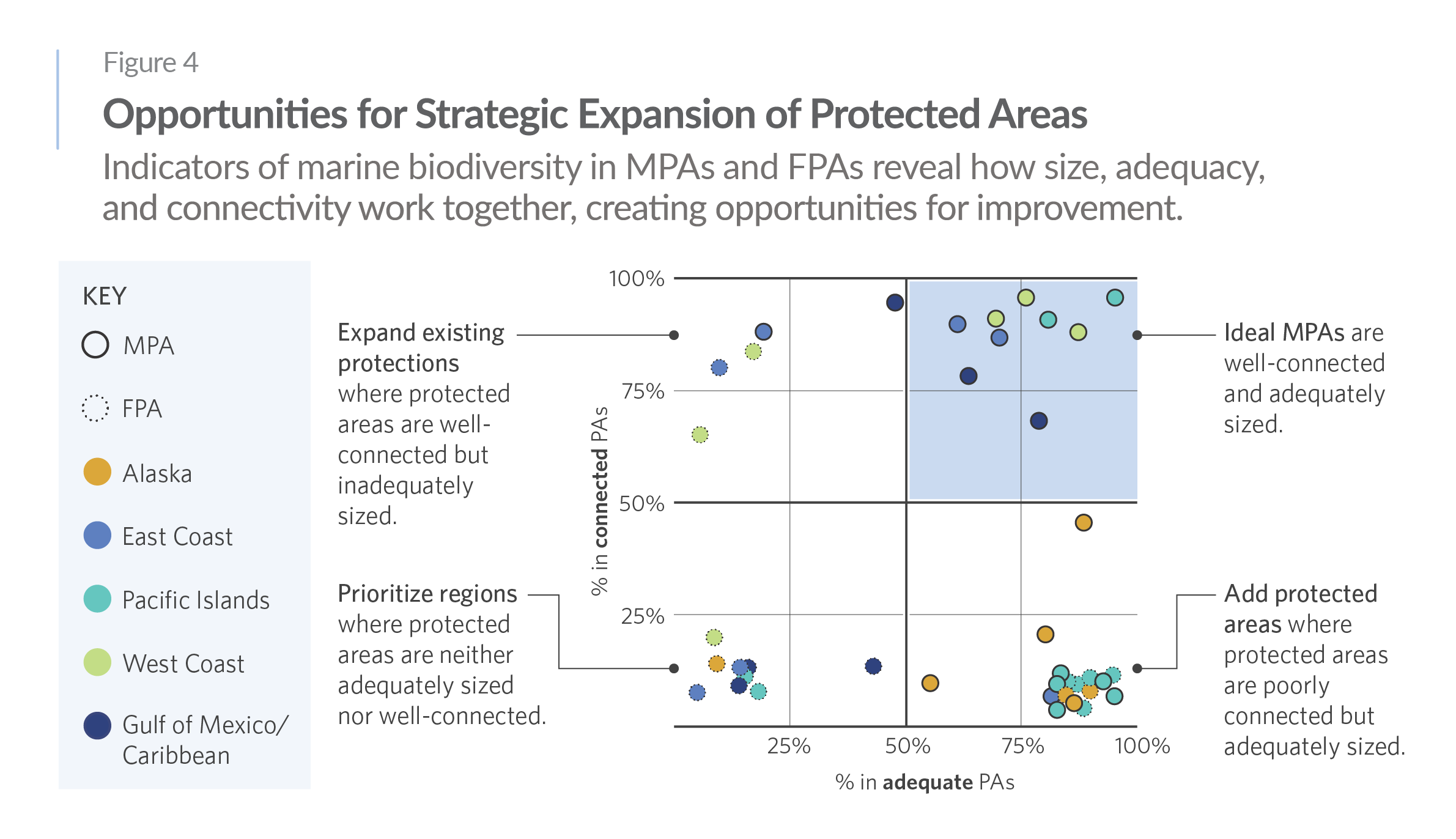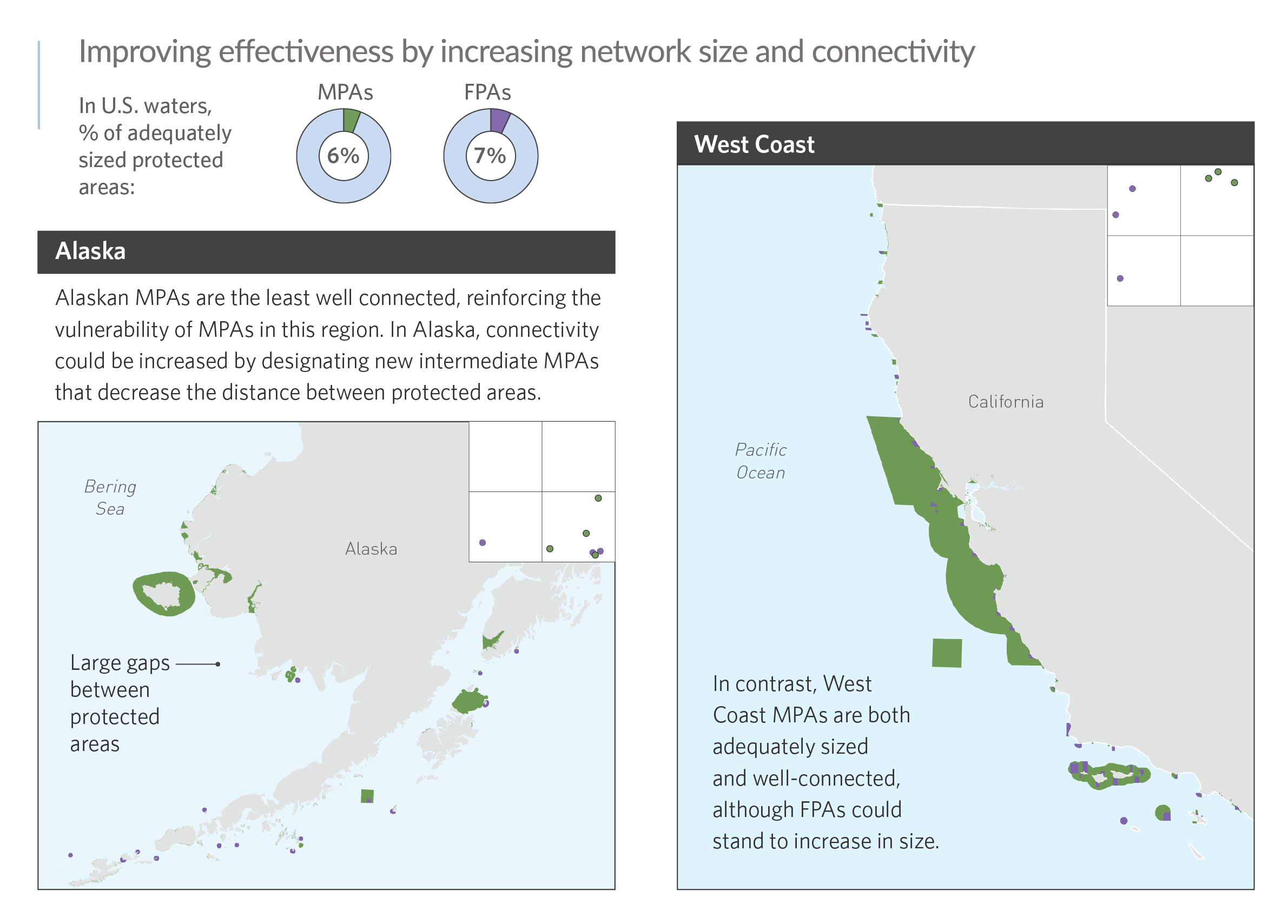New Framework to Assess Marine Biodiversity in U.S. Waters
In a new paper in One Earth, an international task force of experts developed a framework to assess the abundance and distribution of marine biodiversity and applied it to U.S. waters from the near coast to the borders of the Exclusive Economic Zone (EEZ).
Why Assess Biodiversity at the National Level?
The astounding array of biodiversity and habitats in our oceans are at the heart of ecosystem health, sustaining a range of essential services to people, from shoreline protection to commercial and recreational fishing, carbon sequestration, and more. However, climate change, extractive industries and other stressors are threatening marine biodiversity. Stemming its loss is essential across management priorities, including the president’s commitment to protect 30% of coastal and marine waters by 2030, the White House Ocean Climate Action Plan, and the National Ocean Biodiversity Strategy. But just putting in place more marine protected areas (MPAs) will not make them more effective. The U.S. needs a network of MPAs that are more than the sum of their parts. They should be ecologically representative, foster connectivity between habitats, and consider the dynamic nature of coastal and marine systems.
The biodiversity assessment framework is the basis by which managers and communities can ground regional and local actions in a nationwide knowledge of marine biodiversity distribution. It could be used to continually assess biodiversity over time and at multiple spatial scales to strategically expand protections, evaluate management effectiveness, and foster climate adaptation. The framework is able to inform any mandate or policy that involves area-based management and has the potential to link climate resilience and biodiversity by incorporating improved future species distributions.
Key takeaways from the framework’s first application to U.S. waters
- U.S. protected areas fail to meet network criteria, despite 26 percent of U.S. marine waters being in some form of protection.
- MPAs vary widely in success across ecoregions. There are no fully protected areas (FPAs) that are both large and well-connected, and less than two-thirds are in some form of protection.
- Balancing multiple network criteria is key. Some regions have lower area coverage but more effective MPAs because they better balance representativity, replication, and connectivity.
- We likely overestimate protection because of data gaps, including sparse information from outside of MPAs, oceanic waters (vs. coastal systems), and invertebrate species (vs. vertebrates).
Applying the Biodiversity Assessment Framework to U.S. Waters
The framework quantifies indicators of biodiversity (i.e., habitat-forming species, species of conservation concern, harmful organisms, and supporting organisms) across 24 distinct U.S. marine ecoregions, then compares them to the Convention on Biological Diversity’s (CBD) five criteria of an effective MPA network.
Research Leads
- J. Emmett Duffy, Co-Chair, Smithsonian Environmental Research Center
- Daniel Dunn, Co-Chair, University of Queensland
- Sarah Gignoux-Wolfsohn, Smithsonian Environmental Research Center and University of Massachusetts Lowell
Expert Group 1
- Clarissa Anderson, Southern California Coastal Ocean Observing System
- Nic Bax, CSIRO
- Gabrielle Canonico, NOAA Integrated Ocean Observing System
- Peter Chaniotis, Joint Nature Conservation Committee
- Steven Gaines, University of California Santa Barbara
- David Johnson, Seascape
- Lisa Levin, Scripps Institution of Oceanography
- Carolyn Lundquist, National Institute of Water and Atmospheric Research
- Eleanora Manca, Joint Nature Conservation Committee
- Anna Metaxas, Dalhousie University
- Peter Mumby, University of Queensland
- Jan Newton, University of Washington
- Dina Nisthar, University of Queensland
- Malin Pinsky, Rutgers University
- Marta Ribera, The Nature Conservancy
- Ryan Stanley, Fisheries and Oceans Canada
- Tracey Sutton, Nova Southeastern University
- Derek Tittensor, Dalhousie University
- Lauren Weatherdon, United Nations Environment Programme
Expert Group 2
- Abigail Benson, U.S. Geological Survey
- John Christensen, NOAA National Centers for Coastal Ocean Science
- Mimi Diorio, NOAA National Marine Protected Areas Center
- Kirsten Grorud-Colvert, Oregon State University
- Jeffery Leirness, NOAA National Centers for Coastal Ocean Science
- Russell Moffitt, Marine Conservation Institute
- Lance Morgan, Marine Conservation Institute
- Mark Monaco, NOAA National Centers for Coastal Ocean Science
- Beth Pike, Marine Conservation Institute
- Matthew Poti, NOAA National Centers for Coastal Ocean Science
- Jenna Sullivan-Stack, Oregon State University
- Lauren Wenzel, NOAA National Marine Protected Areas Center
- Arliss Winship, NOAA National Centers for Coastal Ocean Science
Geospatial Ecology Experts
- Jesse Cleary, Duke University, Marine Geospatial Ecology Lab
- Corrie Curtice, Duke University, Marine Geospatial Ecology Lab
- Sarah Deland, Duke University, Marine Geospatial Ecology Lab
- Patrick Halpin, Duke University, Marine Geospatial Ecology Lab
- Brittany Pashkow, Duke University, Marine Geospatial Ecology Lab
Key Contacts
- J. Emmett Duffy, Smithsonian Institution, [email protected]
- Daniel Dunn, University of Queensland, [email protected]
- Sarah Gignoux-Wolfsohn, University of Massachusetts Lowell, [email protected]
- Kris Sarri, Go Blue Strategies, [email protected]
- Jason Landrum, Lenfest Ocean Program, [email protected]
- Emily Knight, Lenfest Ocean Program, [email protected]
This effort was supported by the Lenfest Ocean Program and the National Marine Sanctuary Foundation, including funds from the Gordon and Betty Moore Foundation.
Citations
Gignoux-Wolfsohn et al., New framework reveals gaps in US ocean biodiversity protection, OneEarth (2023), https:// doi.org/10.1016/j.oneear.2023.12.014

